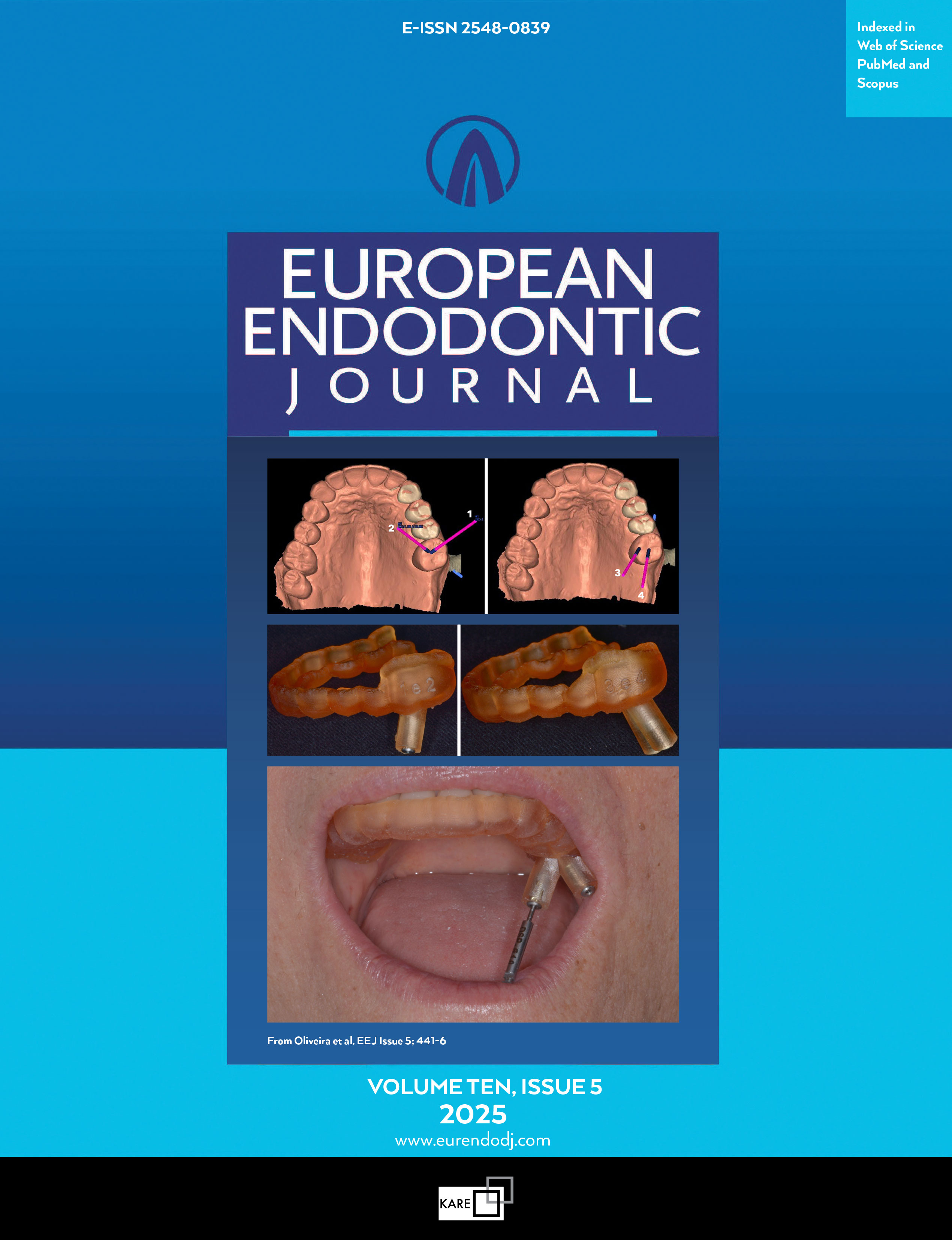Metrics
2024 IMPACT FACTOR
5 year Impact Factor
Eigenfactor Score
2024 CiteScore
Journal Citation Reports
(Clarivate 2025, JIF Rank)
Contemporary Trends in Root Canal Disinfection Among Peruvian Endodontists: A Nationwide Cross-Sectional Survey
Maria Mihaela Iuga1, Fernando Espada Salgado1, Mario Casaretto2, Stefan Stefanescu3, Bogdan Oprea4, Kavalipurapu Venkata Teja5, Apoorva Vasundhara Kaligotla61Faculty of Health Sciences, Private University of Tacna, Tacna, Peru2Cayetano Heredia University, Lima, Peru
3Top Smiles, Liverpool L6 4DU, Merseyside, UK
4Department of Dental Morphology, University Lucian Blaga Sibiu, Romania
5Department of Conservative Dentistry and Endodontics, Malla Reddy Institute of Dental Sciences,Malla Reddy Vishwavidyapeeth, Hyderabad, Telangana, India
6Department of Prosthodontics, Saveetha Dental College and Hospitals, Saveetha Institute of Medical and Technical Sciences, Saveetha University, Chennai, TamilNadu, India
Objective: This study aimed to evaluate current trends in the use of root canal irrigants, agitation techniques, and intracanal medicaments among members of the Peruvian Endodontic Society. The secondary aim was to assess how these clinical practices are influenced by the level of education and years of experience.
Methods: A cross-sectional survey was conducted using a 32-item validated electronic questionnaire. The survey targeted all 445 registered members of the Peruvian Endodontic Society and was distributed in two rounds during February and April 2024. A total of 227 endodontists responded, yielding a 50.1% response rate. The questionnaire collected information on clinicians preferences for irrigant solutions, agitation methods, intracanal medicaments, and intermediate restorative materials. Statistical analyses, including Chi-square and Z-tests, were performed to determine associations between clinical practices and clinician experience or level of education (significance level set at p≤0.05). Two separate multinomial logistic regression models were used to evaluate the association between the level of education and choice of irrigant and intracanal medicament.
Results: Sodium hypochlorite (NaOCl) was the irrigant of choice for 78.4% of respondents, commonly at a concentration of 2.54%. Ethylene diamine tetraacetic acid (EDTA) was used by 87.8%, primarily at 17%. Syringe irrigation with side-vented needles (47%) was the predominant delivery method. Regarding agitation methods, sonic agitation was most used (41.8%), followed by manual dynamic agitation (34.8%). Calcium hydroxide was the preferred intracanal medicament (62.1%), typically used for a two-week period. A statistically significant association was found between the level of education and irrigant selection (p=0.001), as well as between years of experience and intracanal medication usage (p=0.005).
Conclusion: Endodontists in Peru demonstrate strong alignment with internationally recognized disinfection protocols, particularly in the use of NaOCl and EDTA. Agitation techniques and intracanal medication choices showed more consistent and evidence-aligned patterns among clinicians with greater postgraduate training and experience, highlighting the role of professional development. Endodontists in Peru demonstrate a high level of adherence to current standards and protocols regarding root canal irrigation and intracanal medication, indicating that their clinical practices are up to date with contemporary guidelines. (EEJ-2025-04-060)
Manuscript Language: English


